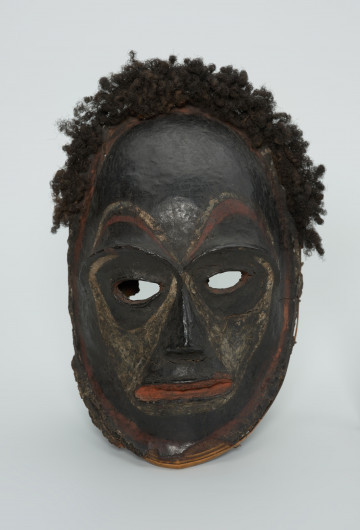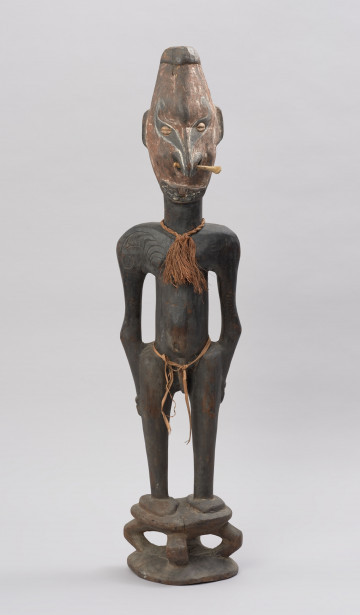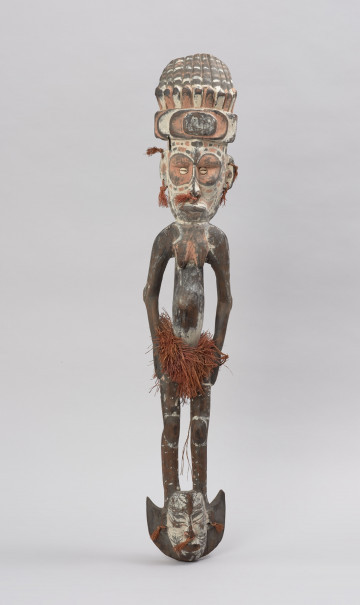
Skull mask
około 1891 — 1900
National Museum in Szczecin
Part of the collection: Art of Papua New Guinea
The ancestor mask comes from the Sepik River in Papua New Guinea, specifically from the Central Sepik region. It was made from the shell of a tortoise. The contours of the human face are accented with kauri shells, which symbolise wealth in the New Guinean culture. The art of this region, created and used by men's associations, is strongly connected with religion, based on extensive ancestor worship. Various masks form a very diverse group of Papuan products. Among them, some masks were never worn, such as the forbidden mwai or mai masks, which embodied the power of a deceased ancestor, as well as those that were elements of ceremonial costumes, worn during performances the occasion of important ceremonies, such as initiations. The initiation was heralded by a unique tambun mask that covered the dancer's entire body in the Sepik region. Its uniqueness is indicated by the material from which it was entirely made - plant fibres. The primary material for Sepik artists was bone and polychrome or blackened wood. Papuans believe that at the moment of death, a supernatural power located in the skull is released. From these beliefs grows the Malaysian cult of skulls. Ancestors' skulls were decorated with feathers and shells, and some of them were covered with clay in which facial features were modelled to resemble masks. The presented specimen refers to this custom. Ancestor skulls were considered magical and sacred objects, so they were kept in temples, the so-called Spirit Houses. They were the best guarantee of stability and prosperity for the whole community and only initiated men had access to them. It was believed that the skulls of ancestors ensured the prosperity and well-being of the entire community. Their power guaranteed good fortune in hunting expeditions and helped in warfare. Colonial and missionary authorities banned the use of skulls. They also introduced European practices for burying the dead. Today, on the Sepik, one of the materials used to make masks based on the ancient tradition is the shell of a small river turtle. In the last fifty years, masks of this type have also begun to be made for the tourist market.
Katarzyna Findlik-Gawron
Author / creator
Dimensions
cały obiekt: height: 28 cm, width: 21,7 cm
Object type
magic object, ceremonial mask
Creation time / dating
Creation / finding place
Identification number
Location / status

około 1891 — 1900
National Museum in Szczecin

1951 — 2000
National Museum in Szczecin

1951 — 2000
National Museum in Szczecin
DISCOVER this TOPIC
Museum of King Jan III's Palace at Wilanów
DISCOVER this PATH
Educational path